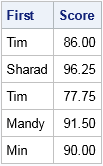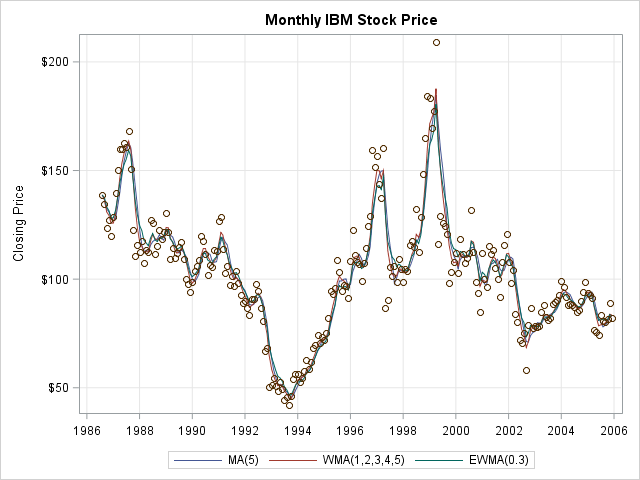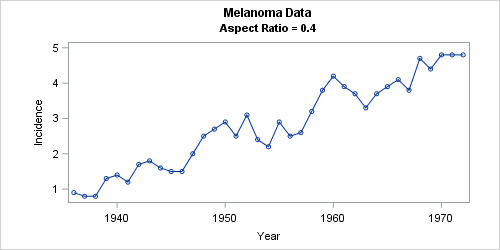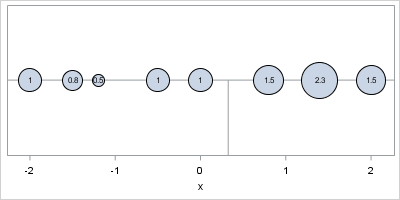The DO Loop
Statistical programming in SAS with an emphasis on SAS/IML programs
Novice SAS programmers quickly learn the advantages of using PROC SORT to sort data, followed by a BY-group analysis of the sorted data. A typical example is to analyze demographic data by state or by ZIP code. A BY statement enables you to produce multiple analyses from a single procedure

A moving average (also called a rolling average) is a statistical technique that is used to smooth a time series. Moving averages are used in finance, economics, and quality control. You can overlay a moving average curve on a time series to visualize how each value compares to a rolling

In SAS, the aspect ratio of a graph is the physical height of the graph divided by the physical width. Recently I demonstrated how to set the aspect ratio of graphs in SAS by using the ASPECT= option in PROC SGPLOT or by using the OVERLAYEQUATED statement in the Graph

Parameters in SAS procedures are specified a list of values that you manually type into the procedure syntax. For example, if you want to specify a list of percentile values in PROC UNIVARIATE, you need to type the values into the PCTLPTS= option as follows: proc univariate data=sashelp.cars noprint; var

I began 2016 by compiling a list of popular articles from my blog in 2015. This "People's Choice" list contains many interesting articles, but some of my personal favorites did not make the list. Today I present the "Editor's Choice" list of articles that deserve a second look. I've grouped

Weighted averages are all around us. Teachers use weighted averages to assign a test more weight than a quiz. Schools use weighted averages to compute grade-point averages. Financial companies compute the return on a portfolio as a weighted average of the component assets. Financial charts show (linearly) weighted moving averages
